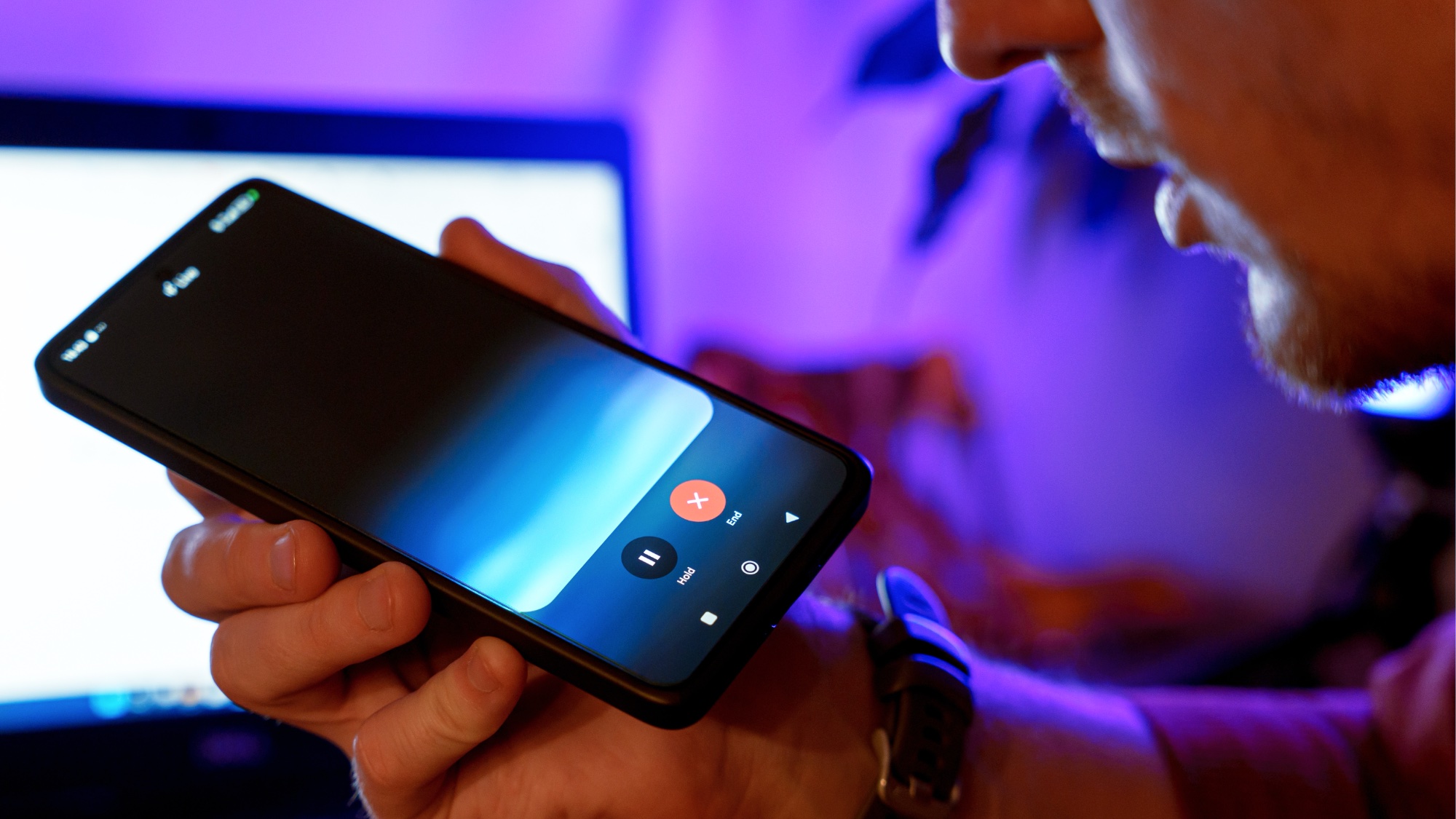Tom's Guide Verdict
The Pebble 2 + Heart Rate is a great low-cost alternative to other smartwatches, but the fitness-tracking features are fairly limited.
Pros
- +
E-paper display easy to view
- +
Lots of notification options
- +
Audio controls for paired devices
Cons
- -
Only one size
- -
Some notifications delayed
- -
Limited activity-monitoring features
Why you can trust Tom's Guide
Like its predecessors, the Pebble 2 + Heart Rate ($129) lets you receive a deluge of smartphone notifications, respond to texts and control music playback, but it also tracks steps and uses a heart-rate monitor to gauge the intensity of workouts and calculate your estimated calorie burn. Just don't expect Fitbit-level quality out of this wearable.
Design
The Pebble 2 + Heart Rate has a 1.26-inch screen and it feels surprisingly thin at 0.39 inches, versus the 0.45-inch-thick Apple Watch 2. The optical heart-rate monitor's green LEDs are housed in a very small area of the back of the watch face, and its e-paper display made the screen easy to read indoors and out.
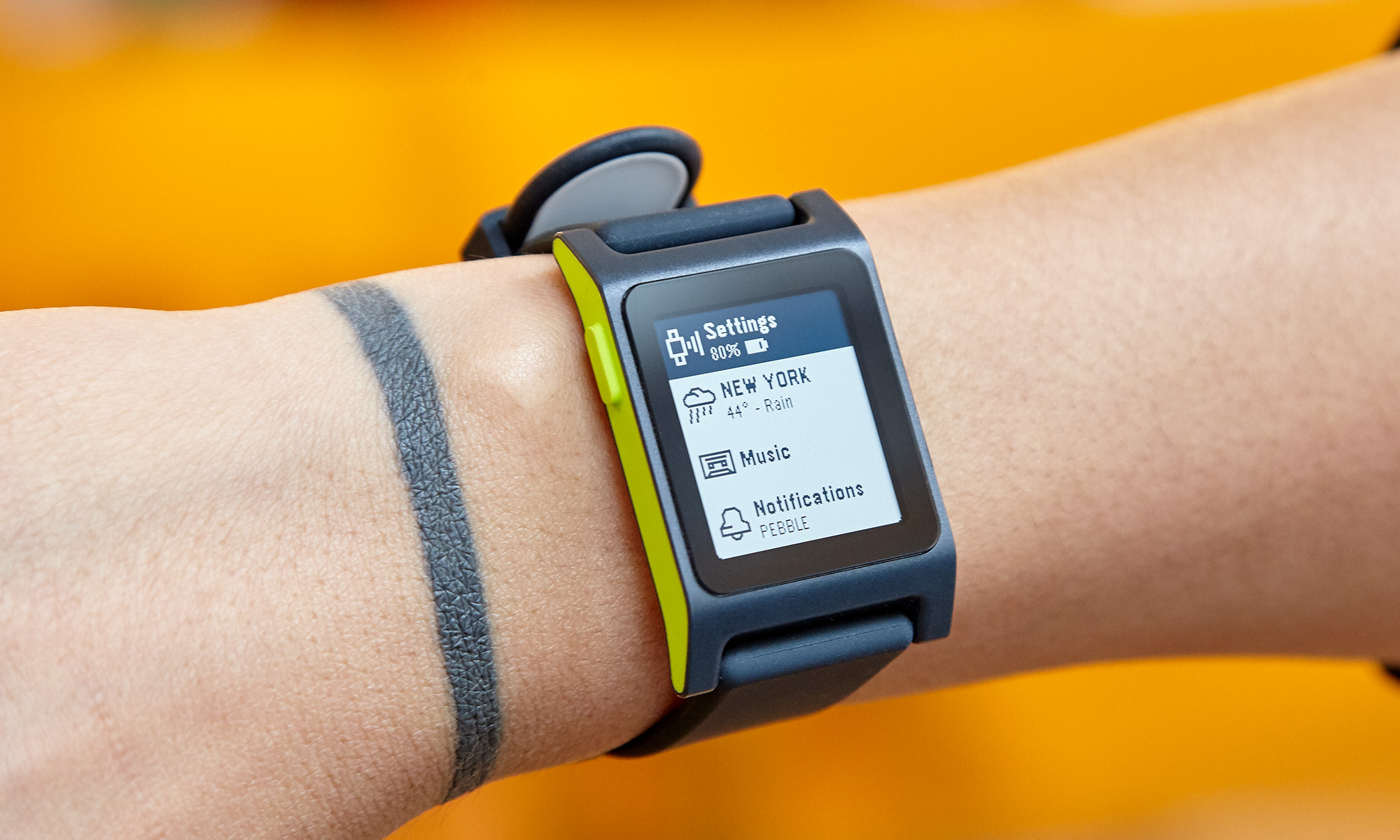
The strap that's included comes unattached, and while Pebble says its wristband can be attached using a "Quick Release" system, I didn’t find its tiny spring-loaded system very easy to use. It took me a few tries just to attach the band.
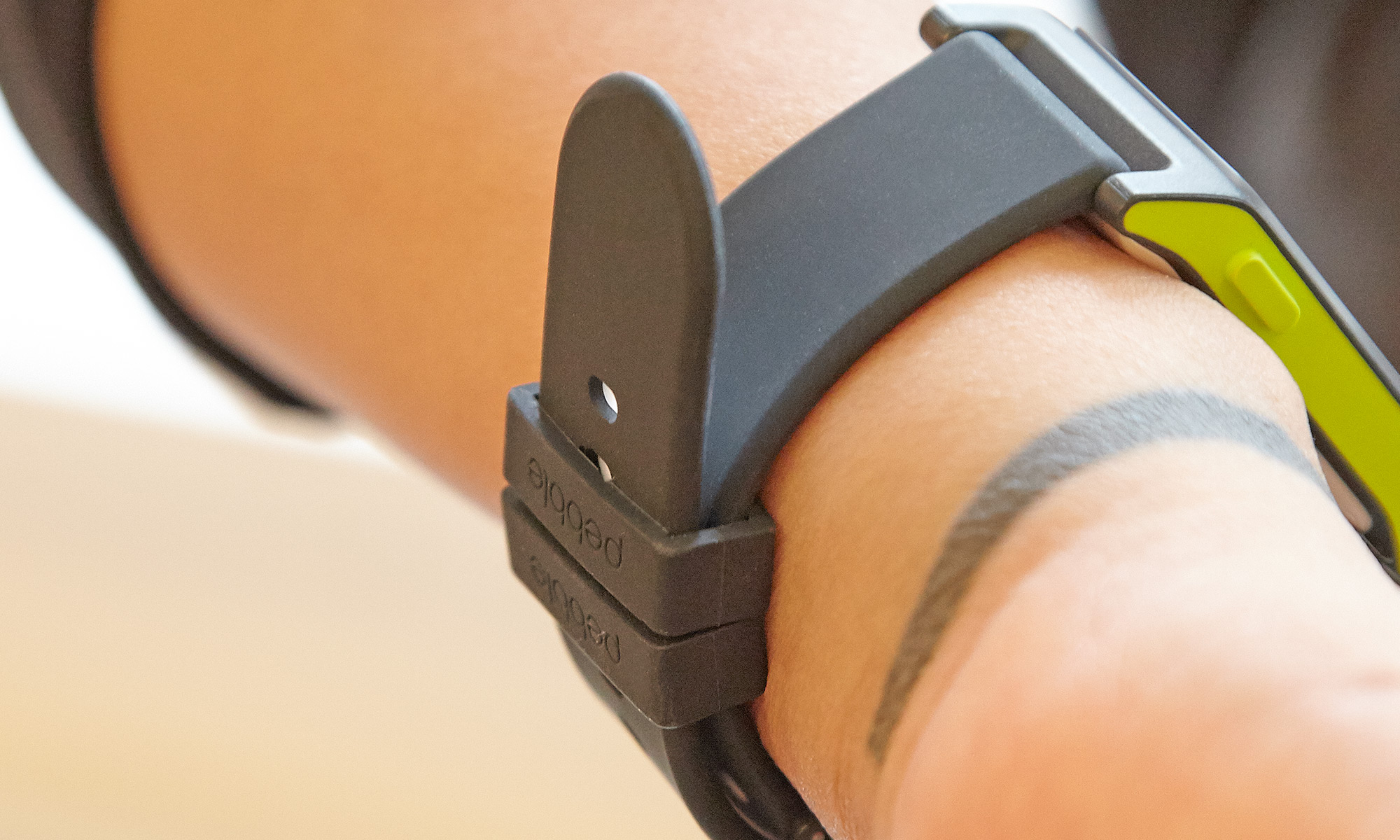
The strap is nearly an inch wide and comes in only one length, making it seem like it was designed more for men than for women. With my small wrists, I found it difficult to keep the extraneous part of the strap secured to my wrist.
It’s water-resistant up to about 100 feet, meaning you can swim with it, shower with it or endure a torrential downpour.
That extra part kept flopping around and getting in the way more than your average wrist-worn device that comes in several sizes.
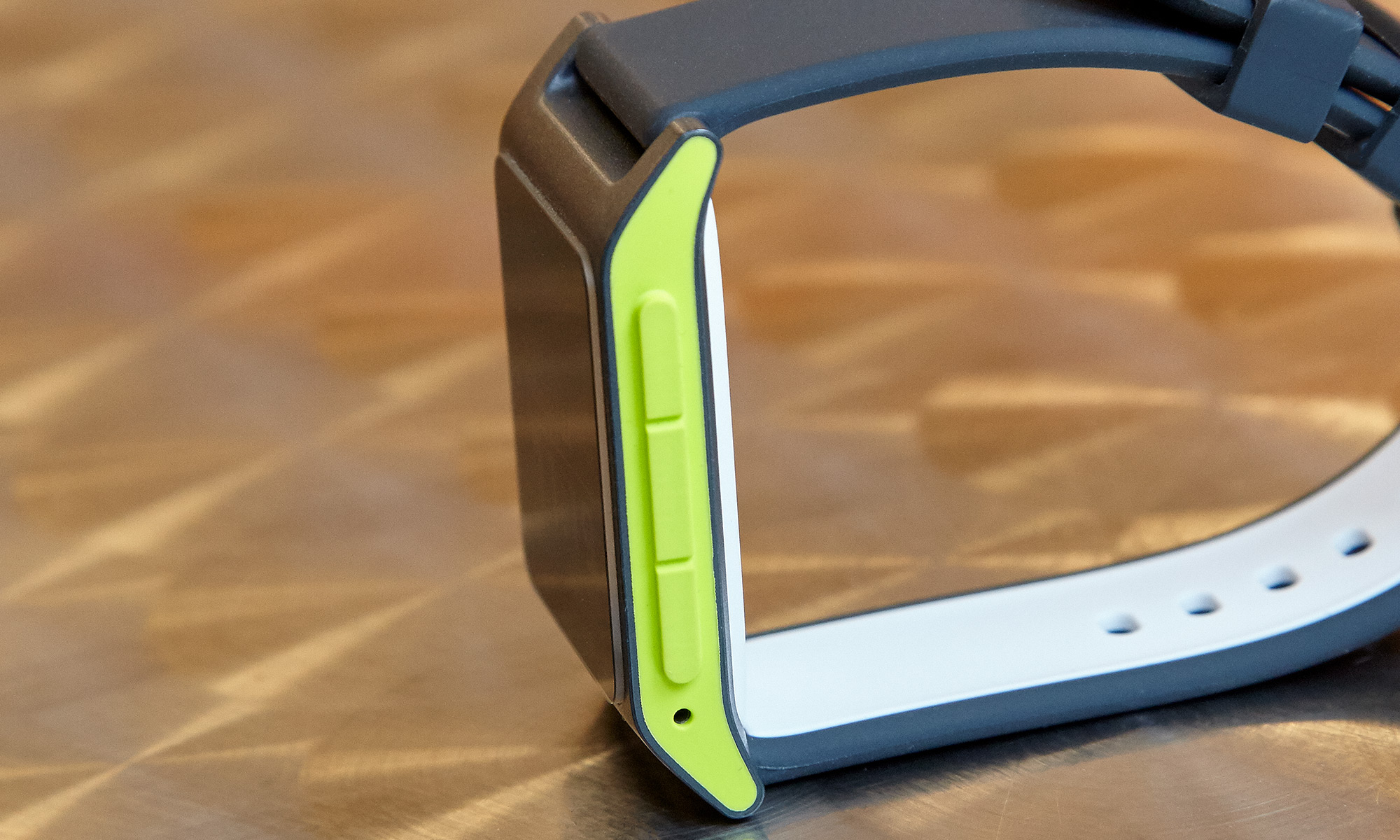
If you want to personalize your watch face, there are dozens of options to choose from in the Pebble mobile app. You can choose simple options with just the time and date, or those that show the time, date, weather and heart rate on your home screen.
Pebble says the Pebble 2 is weatherproof, and it's water-resistant up to about 100 feet. That means you can swim with it, shower with it or endure a torrential downpour without worrying about water damage.
MORE: Best Fitness Trackers for Running, Swimming and Training
Overall, I found the charcoal-and-lime device I tested unattractive, somewhat cheap-looking and maybe more fit for casual ensembles than for business or formal environments. (The Pebble 2 + Heart Rate comes in four other colors: black, white, flame and aqua.) But you'll generally have to put down a lot more cash for a classier looking smartwatch. For instance, the Apple Watch Series 1, the least expensive Apple Watch, starts at $269.
Fitness Tracking
The Pebble 2 + Heart Rate automatically tracks steps, sleep and heart rate, but overall, I wasn't impressed with the fitness features or the accuracy.
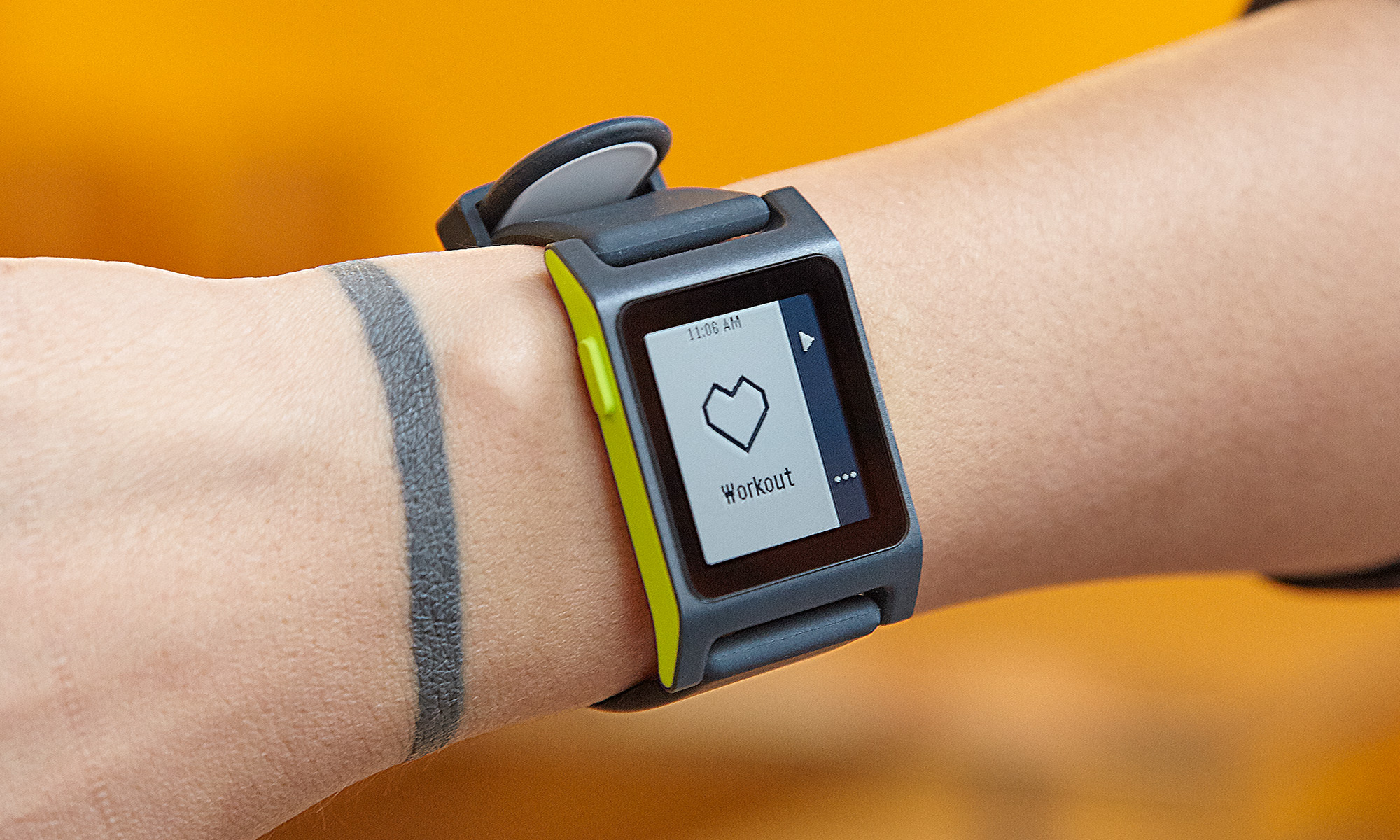
The watch operates in three modes: Walk, Run and Workout, with the latter applying to any other kind of exercise. The watch doesn't automatically detect different exercises, but a Pebble spokesperson says more activity-tracking options will be available in the future. The button on the top right side of the screen lets you scroll through your fitness stats, including your step count, heart rate and sleep.
The Pebble 2 tracked 8,784 steps, while the Fitbit tracked 11,585 steps.
Different fitness trackers and workout-focused smartwatches generally use different algorithms to detect steps, and the Pebble 2 + Heart Rate significantly undercounted mine. On a full day when I wore both the Pebble 2 + Heart Rate and a Fitbit Charge 2, the Pebble tracked 8,784 steps, while the Fitbit tracked 11,585 steps. In my experience, Fitbit devices tend to undercount my steps, too, so I fear that the Pebble 2's tracking was significantly off.
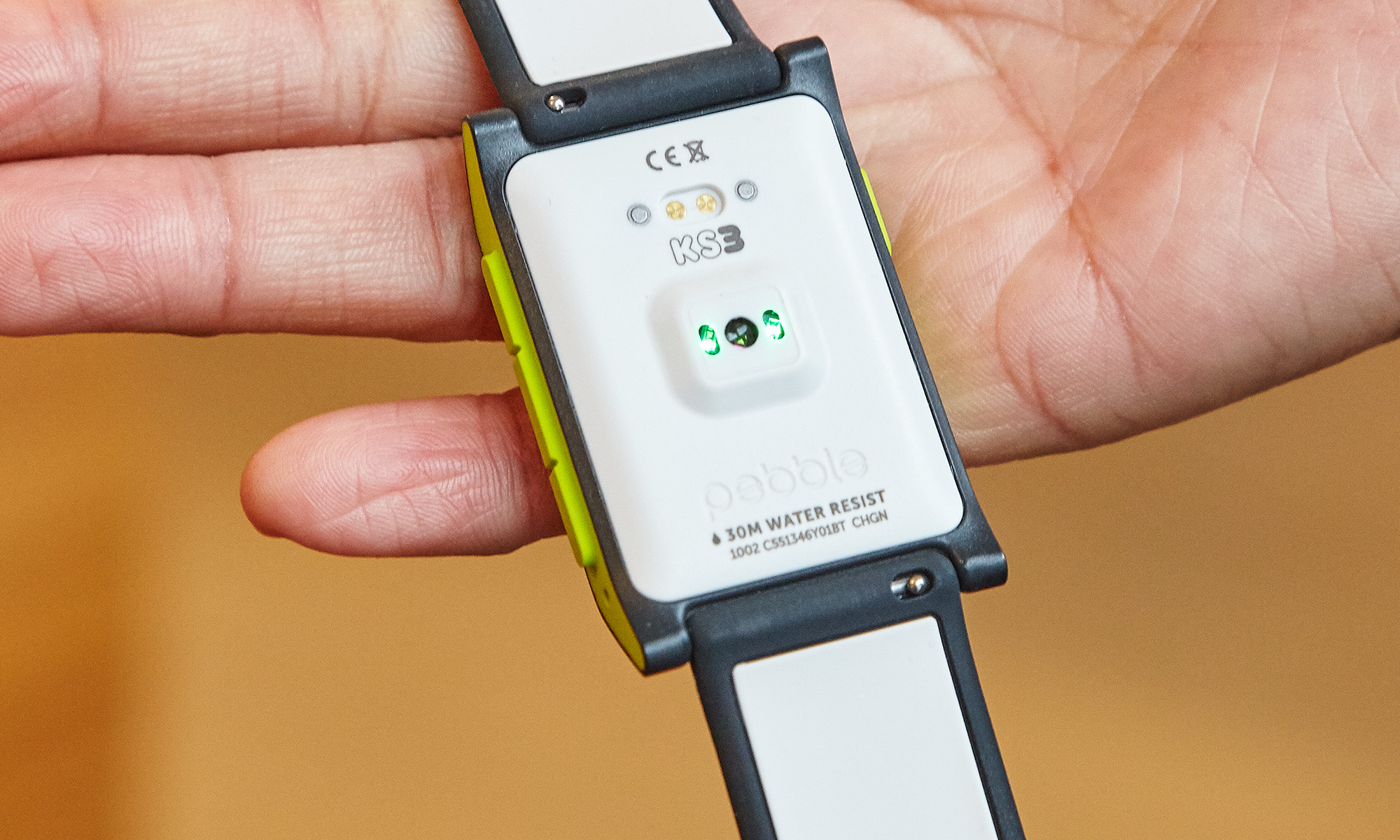
Heart-rate readings generally matched those from the heart-rate monitor on an elliptical machine at the gym, as well as the readings I got from a Fitbit Charge 2. There was one occasion when the Pebble recorded my heart rate as 188 beats per minute while I was simply typing on my computer at work. Pebble says these spikes can occur when the heart-rate monitor shifts out of place.
MORE: Fitness Tracker Buying Guide
I find encouraging messages a nice touch in general, so I appreciated seeing feedback pop up on the Pebble 2 screen, such as "You walked 8,211 steps today; keep it up! Being active is the key to feeling like a million bucks."
Apps
Pebble's own mobile app runs on Android devices running 4.3 or later and iOS 8 or later. With the Pebble app, you can view your fitness stats starting with your step count and find out how it compares with your average day. Scrolling down, you'll see a line graph of your heart rate, then a chart showing your sleep overall and how long you spent in deep sleep.
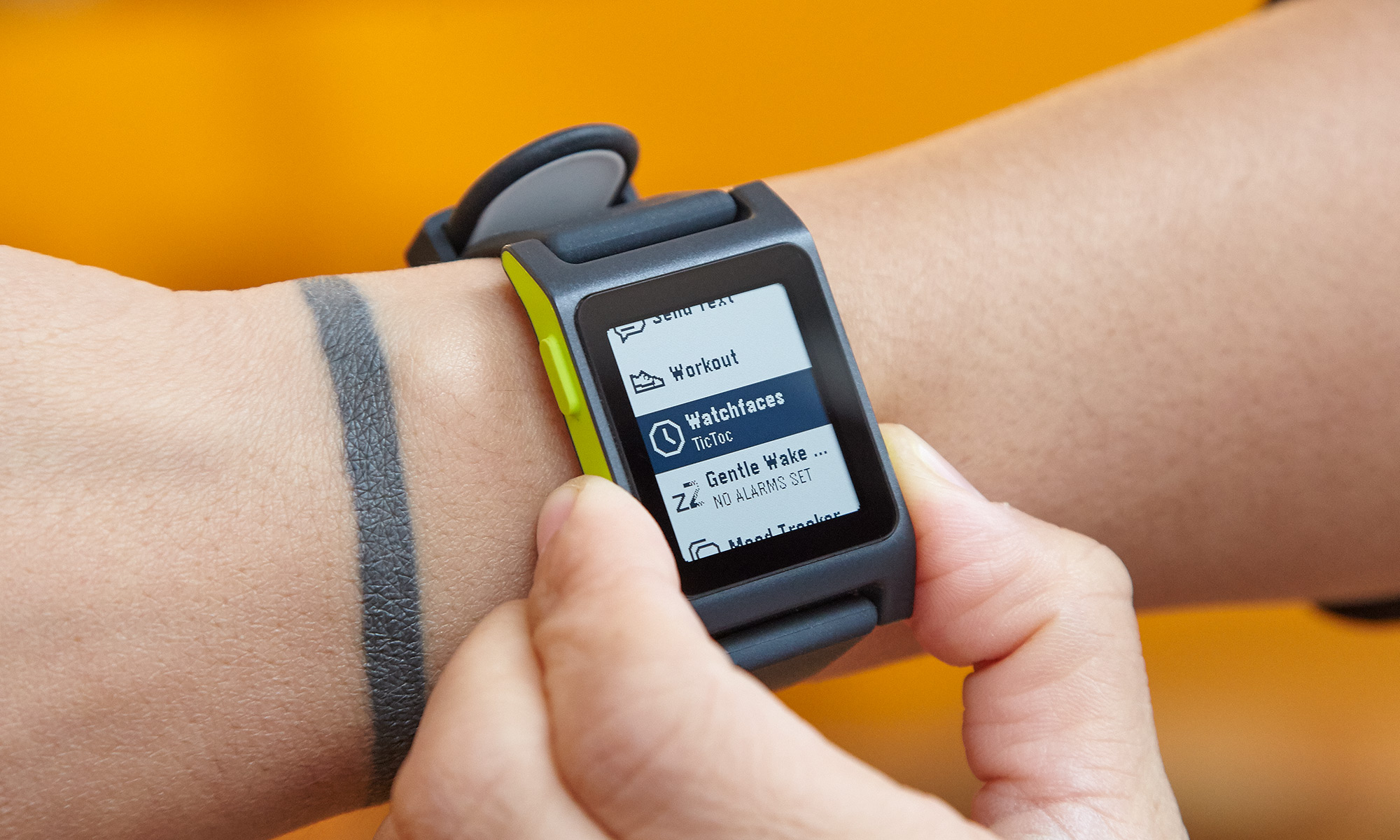
There are 15,000 apps and watch faces that you can download for customizing your Pebble, including extra fitness features, games and tools. The Maptastic app, for instance, which uses Google Maps and other sources, is an easy-to-use tool for navigating the city. And the Yelp app helped me find information on restaurants nearby, though text appeared garbled at times on the Pebble's screen.
The ability to get all of your smartphone notifications on the Pebble is its best feature.
To scroll through all of the apps installed on the Pebble 2, you'll first press the middle button on the right side of the watch face. From there, you can scroll through and change your device settings, check the local weather, control music playback, view notifications, texts, and workout stats, plus change your watch faces and access third-party apps. You’ll navigate using the top and bottom buttons on the right side of the watch.
MORE: 15 Best Fitness Apps
Pressing physical buttons on the sides of the watch face several times to scroll wasn't the best, ergonomically speaking, for me. I had to exert some effort and bend my wrists to the side in order to both read the screen horizontally and scroll. It made me wish the device had a touch screen so I could swipe freely while keeping my wrist in a straight and more natural position. But that could add to the Pebble 2 + Heart Rate's cost.
Notifications
When your smartphone is buried at the bottom of your purse, or stashed in who-knows-which pocket, the ability to get all of your smartphone notifications on the Pebble is its best feature.
The Pebble Watch + HR let's you assign vibrations to different notifications. There's even a pulse paced to the Super Mario theme song.
Using the Pebble app, you can choose to receive notifications for practically all of the apps on your smartphone. When a notification comes in, the watch will vibrate and the notification will appear on the screen automatically. You can scroll through entire text messages and emails. There's even an option to open messages on your phone's screen to get a better look.
You can also specify the kind of vibration you want to differentiate notifications, including two quick, gentle vibrations, one gentle or forceful vibration, or even a vibration paced like the Super Mario theme song intro.
It's far too easy to accidentally clear all of the notifications that show up on the Pebble 2 + Heart Rate, though, as the "clear all" option is at the top of the notifications menu. In addition, the Bluetooth connection between the Pebble and my old HTC One A9 Android phone occasionally cut out, delaying notifications.
If you're the type of busy person who schedules every moment of the day, the Timeline feature on the watch will be invaluable. From your default watch face, pressing the bottom right button on the Pebble 2 + Heart Rate brings up your calendar and two days' worth of events.
The button to the left of the watch face is the back button, but you can also start and stop a "quiet time" by holding down the button on the left side of the screen until the watch vibrates and a tiptoeing mouse icon shows up.
Texting
When you receive a text message, you'll get a notification. After scrolling through to read the text, you can reply with a text using your voice, send a suggested "canned message" or a canned message that you’ve tailored in your settings. Or you can just send an emoji.
You can speak to the watch to send a message, and voice-to-text translations were pretty accurate.
Separate from your notifications options, a Send Text app lets you send messages to specific contacts who you add to the app without having to scroll through dozens of notifications to find them. You can speak to the watch to send a message, and in our experience, voice-to-text translations were pretty accurate.
When recording audio replies, I didn't need to yell into the watch or over-enunciate. I could speak at a normal volume, without holding the watch up to my face. The Pebble transcribed my speech just fine, even writing out "gonna" if I said it instead of "going to." It could also transcribe my speech correctly while I was standing in the middle of a relatively loud conversation. The Pebble 2 even transcribed curse words, albeit with asterisks.
All of the same texting options also appear when you decline a phone call from the watch, as the option to reply with a text pops up automatically.
Music
With a music app open on your phone, you can use the Pebble 2 to fast forward, rewind, adjust volume and see the names of the songs you're listening to. It was a pleasure to control the volume coming through my Bluetooth earbuds from my watch during my subway commute.
Battery Life
Pebble says the Pebble 2 + Heart Rate can last as long as a week on a single charge. That wasn't quite my experience, though, as the watch I tested lasted about four days on a charge. Granted, I received frequent text messages and set up Gmail, Facebook, Facebook Messenger, Instagram, Google Hangouts, calendar and call notifications.
In our testing, the Pebble 2 + Heart Rate took less than 2 hours to charge.
Still, lasting even four days is longer than you can expect from the Apple Watch or the Motorola Moto 360, which each have a rated battery life of about 18 hours.
Pebble devices are charged with a proprietary magnetic USB charging cable. In our testing, it took less than 2 hours to charge the watch, so if you charge it while you're sitting at your desk during the day, it could very well be fully charged by the time you get up for a break from your computer.
Bottom Line
While the Pebble 2 + Heart Rate adds a new dimension in fitness to Pebble's smartwatch lineup, the device is a smartwatch first, and its limited fitness features feel like an afterthought.
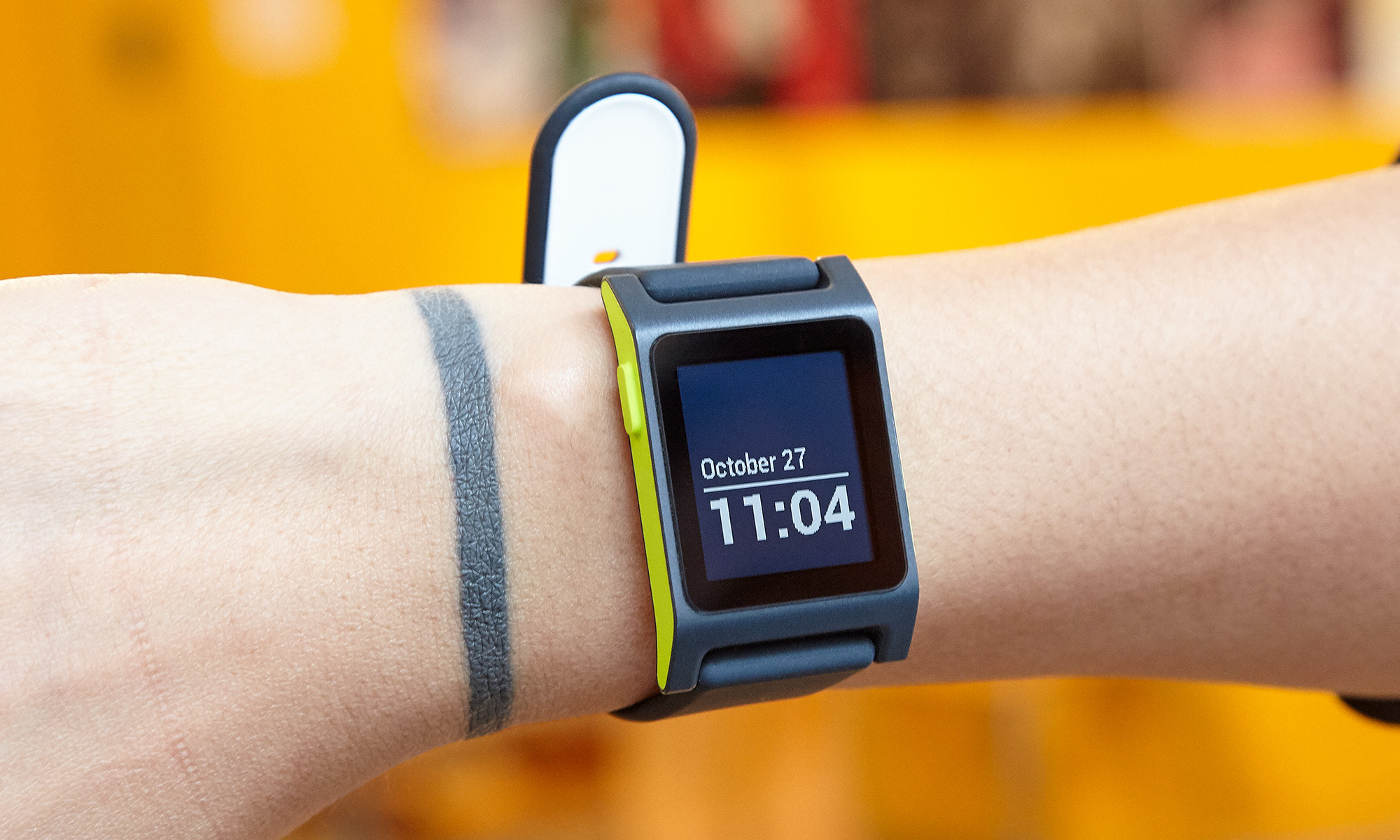
If smartphone notifications are what you really need, and the ability to track steps and sleep are a plus, this could be the smartwatch for you. If fitness-tracking features are what you need most, you're better off with a dedicated fitness tracker, like the Fitbit Charge 2, which can give you text and call notifications in addition to tracking and predicting your activities.
Althea Chang is Associate Director of Content Development for Consumer Reports and was previously a Senior Writer for Tom's Guide, covering mobile devices, health and fitness gadgets and car tech.
